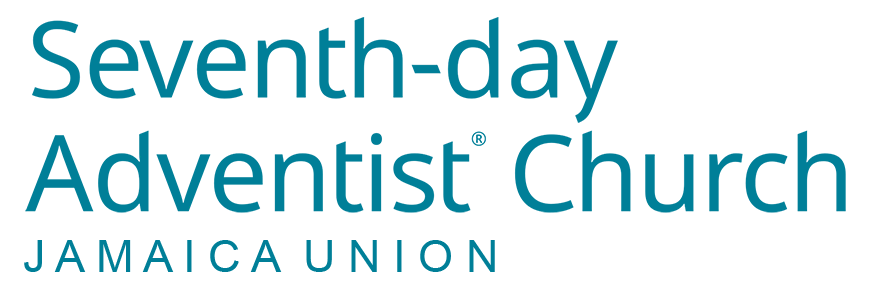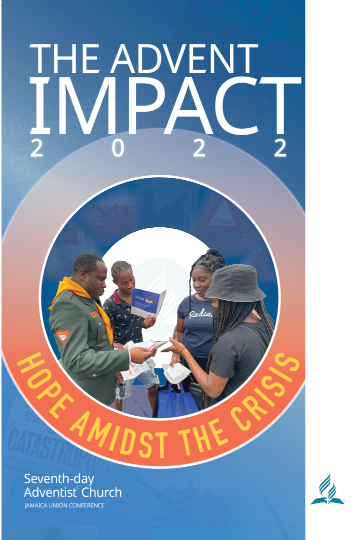The Jamaica Union Conference – More than a century of extraordinary stewardship
The story of the Jamaica Union Conference is one of stupendous growth and development over more than a century of extraordinary stewardship, sacrifice, worship, social outreach and scholarship. It is a story that has emerged through challenges that would test the faithful; but it is a story of triumph under God’s guidance and miraculous intervention.
In 1891, at the request of James Palmer of Kingston the Tract Society in the United States of America mailed literature to Jamaica. He gave one to Mrs. Margaret Harrison who is said to be the first Adventist in Jamaica and whose plea to a General Conference session in Battle Creek, Michigan, resulted in the arrival of the first missionaries to the island, Pastor A J. Haysmer and his wife, on May 26, 1893.
The church was able to host a meeting of all workers in the West Indies from November 5 to 15, 1898 at Text Lane, in Kingston, Jamaica. By February 1899, there were six organised churches and 15 other congregations, with a total of 502 members and about 100 other Sabbath-keepers. The records show that by May, 1902, this number had grown to18 churches and 13 other congregations.
Jamaica Becomes a Conference
By early 1903, it became clear that Jamaica had become the centre of Adventist activities in the Caribbean basin and was now ready to become a Conference.
At its 35th meeting in Oakland, California, in March 1903, the General Conference of Seventh-day Adventists voted to receive the Jamaica Conference into the fellowship. Rapid church growth followed although ordained ministers were few, but the lay members shouldered much of the work.
In the meantime, the Seventh-day Adventist message reached the Bahamas also. In 1893, C. H. Richards, a colporteur and his wife canvassed in those islands and gained the interest of a young policeman. The first church building, the Shirley Street Church, was built in Nassau under the direction of J. H. Smith in 1914. The Bahamas became a Mission in 1909 as part of the Southeastern Union.
The Cayman Islands were also receiving the message at this time. The first Seventh-day Adventist in Cayman was Gilbert McLaughlin who heard the message in Honduras about 1894 and returned to Cayman shortly thereafter, erected a small church and from there the work grew. The islands were organized into a Mission in 1929 with a membership of 33 in with two churches.
Adventism reached Turks and Caicos Islands in 1905 when Phillip Porter a colporteur from Jamaica went to these islands and evangelized the people. Turks and Caicos became part of the Salt Cay Mission in 1945.
Education & Health
In the building of the Seventh-day Adventist denomination, education and health were essential planks. With the work growing superlatively in Jamaica, the need for an Adventist school to train new converts as ministers and church workers for the region became paramount. In 1906, suitable land was acquired at Bog walk and then Riversdale, St. Catherine for this venture, and the West Indian Training School was established. Its policy of work-study helped students to work while studying in order to assist with the cost of their education. In 1919, the school was relocated to its present home in Mandeville and later became the West Indies College, now Northern Caribbean University (NCU).
The establishment of the school in 1906 was followed six years later by the opening of a “Massage and Hydropathic Treatment Rooms” in Kingston. As demand for its services grew, members clamoured for a hospital. In 1945, their dream was fulfilled in the establishment of the “Andrews Memorial Hospital and Missionary Clinic” in Kingston. Along with the facility, a nursing school was started. Today, Andrews Memorial Hospital provides a facility, with cutting edge medical services such as CT Scan, ultrasound, liptotriptor, surgery, maternity care, dental care and a pharmacy. It collaborates with NCU in training nurses.
Organisational Structure
As the membership of the territory grew phenomenally, thoughts turned to the necessity to put organisational structures in place to ensure the smooth running of the church. In 1906, the West Indian Union Conference was established to include all the Adventist conferences and missions in the Caribbean and Central America, numbering about 4,000 Sabbath-keepers. In 1915, the region was reorganized, and West Indian Union was confined to Jamaica, South Caribbean and West Caribbean Conferences. In 1930, the Cayman Islands Mission, with 57 members in three churches, joined Jamaica and The Bahamas in what was then called the Antillean Union also covering the Spanish and French Islands in the western Caribbean.
At the 1936 General Conference, Elder A.C. Stockhousen was moved to report: “Jamaica is one of the largest conferences of Seventh-day Adventists in the world… The only conference in North America with more churches is the Michigan Conference… Today there are 5,335 baptised believers…A more loyal and serious band of believers it would be hard to find anywhere.”
The British West Indies Union Mission was established 1944 with headquarters in Mandeville, Jamaica, comprising The Bahamas, the Cayman Islands, British Honduras, Jamaica and the Turks and Caicos Islands. At that time, the Jamaica Conference was divided into the East and West Jamaica Missions. Five years later, the missions were organised into conferences.
The British West Indies Union Mission was established 1944 with headquarters in Mandeville, Jamaica, comprising The Bahamas, the Cayman Islands, British Honduras, Jamaica and the Turks and Caicos Islands. At that time, the Jamaica Conference was divided into the East and West Jamaica Missions. Five years later, the missions were organised into conferences.
Over several reorganisations, the Turks and Caicos Islands reappeared and disappeared from the Union as a mission, until it re-emerged for good in 1988, with 185 members. Another reorganisation in 2002 brought about the North Jamaica Mission to cover St Ann, Trelawny and St Mary. The North Bahamas Mission was also created and entered the sisterhood in 2003, showing a total of 11 churches and 1,326 members. It has now been elevated to Conference status with 2,300 members in 11 churches.
The Bahamas gained Conference status in 1968. The Cayman Islands Mission achieved Conference status in June 2004.
Publishing Ministry, Social Services
The expansive of the work of the West Indies Union Conference has been underpinned by the publishing ministry, with its army of faithful colporteurs. The Union has grown to cover evangelicalistic, health, education and youth programmes, involving 10 high schools, 22 elementary schools and numerous basic schools, in addition to the ever expanding NCU.
The expansive of the work of the West Indies Union Conference has been underpinned by the publishing ministry, with its army of faithful colporteurs. The Union has grown to cover evangelicalistic, health, education and youth programmes, involving 10 high schools, 22 elementary schools and numerous basic schools, in addition to the ever expanding NCU.
The West Indies Union Conference, now covering Jamaica, the Turks and Caicos Islands, The Bahamas and the Cayman Islands, stands today as a beacon of God’s light, transforming hungry souls with the joyful news of the Second Advent and bringing comfort to the afflicted in their hour of greatest need.
Learn More…
Learn more about the Adventist World Church.






